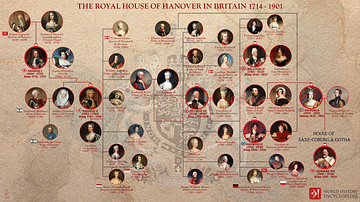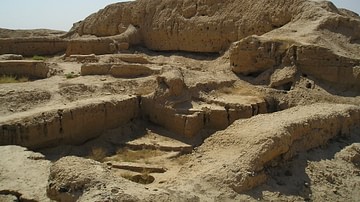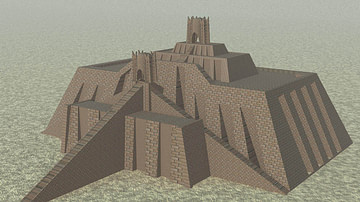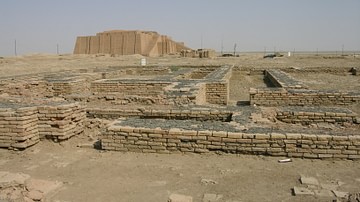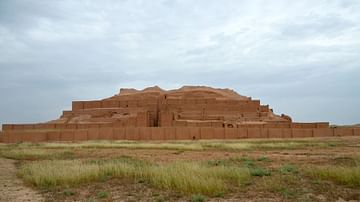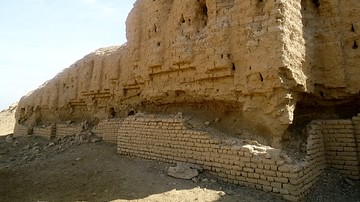Illustration
The ruins of the Great Ziggurat of Ur, taken in 2005 CE near Ali Air Base in Iraq.
The ziggurat was built by the Sumerian King Ur-Nammu and his son Shulgi in approximately the 21st century BCE (short chronology) during the Third Dynasty of Ur. The massive step pyramid measured 210 feet (64m) in length, 150 feet (46m) in width and over 100 feet (30m) in height. The height is speculative, as only the foundations of the Sumerian ziggurat have survived.
The ziggurat was a piece in a temple complex that served as an administrative center for the city, and which was a shrine of the moon god Nanna, the patron deity of Ur.
The construction of the ziggurat was finished in the 21st century BCE by King Shulgi, who, in order to win the allegiance of cities, proclaimed himself a god. During his 48-year reign, the city of Ur grew to be the capital of a state controlling much of Mesopotamia.
King Nabonidus, the last king of the Neo-Babylonian Empire in the 6th century BC, after "finding little left but the last stage and nothing to guide him as to the monument's original appearance", had it restored in seven stages rather than three.
Text from Wikipedia.
Cite This Work
APA Style
Hardnfast, . (2012, April 26). Great Ziggurat of Ur. World History Encyclopedia. Retrieved from https://www.worldhistory.org/image/197/great-ziggurat-of-ur/
Chicago Style
Hardnfast, . "Great Ziggurat of Ur." World History Encyclopedia. Last modified April 26, 2012. https://www.worldhistory.org/image/197/great-ziggurat-of-ur/.
MLA Style
Hardnfast, . "Great Ziggurat of Ur." World History Encyclopedia. World History Encyclopedia, 26 Apr 2012. Web. 18 Apr 2024.


